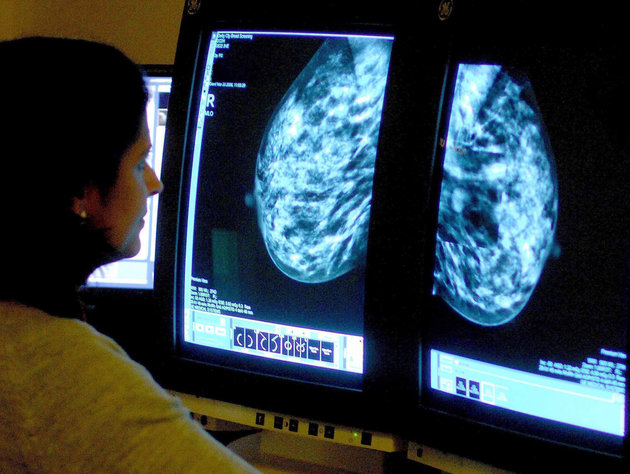

CHICAGO: Computer-assisted detection used in most U.S. mammograms adds no benefit to breast cancer screening while substantially increasing costs, a large study suggests.
Some previous research said computer technology could serve almost as a second set of eyes for doctors. The technique uses special software to highlight suspicious-looking areas on mammogram images that radiologists who interpret the scans may have missed. The doctors then take another look before making a determination.
But some of these earlier studies involved adding computer detection to mammograms using outdated film X-rays, not more advanced digital X-rays now used in most mammograms nationwide, the study authors said. The older technique was more cumbersome; now computer-assisted detection is a standard part of digital mammogram machines.
The study involved nearly 324,000 women who had digital mammograms from 2003 to 2009. The researchers compared cancer detection rates after scans with and without computer-assisted detection. About 20 percent of scans did not include the technology.
The overall cancer detection rate - about 4 in 1,000 women - was similar in both groups.
Computer-assisted scans did prove to be slightly better at detecting very early tumors called ductal carcinoma in situ or DCIS, but whether that is a benefit is debatable because these tumors are not invasive and some experts think they should not even be considered true cancers.
The technology "may be encouraging radiologists to find lesions that don't matter as much," said lead author Dr. Constance Lehman, director of breast imaging at Massachusetts General Hospital. "The jury's still out on whether that's benefiting these women."
The study was published Monday in JAMA Internal Medicine. The National Cancer Institute paid for the research.
Screening mammograms are preventive care and many insurers cover the scans with no copay for patients. However it costs the health system more. It was approved for mammograms in 1998, Medicare coverage was added a few years later and private insurers followed suit. Doctors get paid $7 more from Medicare and $20 more from private insurers for mammograms done with computer-assisted technology.
"We need to be really on top of new technology so we're using our health care dollars wisely and not spending dollars where we don't see a benefit," Lehman said.
An editorial in the journal says the study raises important questions about continued use of the technology with screening mammograms.
"Payments for ineffective services like CAD (computer-aided detection) combine to bloat our health care economy," the editorial said.
But Dr. Kathryn Evers, director of breast imaging at Fox Chase Cancer Center, said the study "is certainly not the last word."
CAD devices differ and some may be more effective than others, Evers said, recommending additional research to determine when the technique might be appropriate in breast cancer screening.
AP



